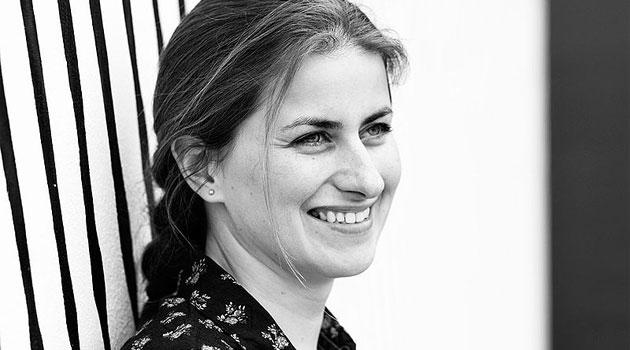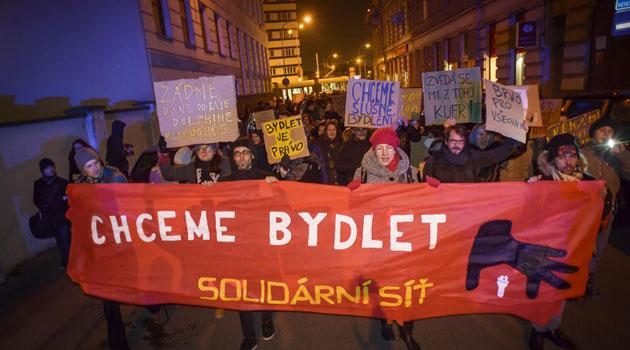Czech artist writes a guide to the Brno "Bronx", says Romani people "uninterested" in education

The Brno-based artist Kateřina Šedá and a team of collaborators have put together a “guide” to Brno’s so-called “Bronx” neighborhood and she has given an interview to news server iDNES.cz in which she criticizes the life of Romani residents there. The artist is quoted as saying in the interview that local Romani people are not interested in education and that their children’s aim in life is to draw unemployment benefit because that is what they see adults doing in their families.
“They say the biggest problem is that they have their children in segregated schools. When I responded that some schools that are not segregated are located very close by, that it would take just a half an hour to commute to the city center and they can enroll their children into other schools there, I frequently heard that those schools are too far away. I didn’t hear ‘They won’t take us’ or ‘It doesn’t work, we’ve already met with them’,” the artist said in the interview.
Most of the Romani children the artist claims to have spoken with allegedly told her they want to draw unemployment benefits when they grow up. She said she believes that reflecs the kind of role models they have in their families.
“They have parents who just wait for that money to come every month. The children don’t want to go study, they want to enroll as unemployed because they will get money immediately. They have classmates who perceive their futures the same way, so it will be difficult to influence them otherwise,” the artist said.
Šedá also believes there is a group of Romani people living in the “Bronx” who are doing their best and actually working, but their numbers are negligible. “However, there’s another section of people there who go to the Fortuna betting room near the Albert supermarket each day to gamble. Apparently they make their living that way. Some of them perceive that activity as work. At the same time, I believe that poverty, and this is a general principle, generates things that are more interesting, most of the time, than wealth does. The reason is impoverished people must be more inventive in their life strategies. They seek principles for how to survive. It’s not always that they resort to theft, but frequently they must work under the table. I found, for example, a brilliant hairdresser in that locality, or a person who does tattoos, and I wanted to aid them by giving them room to advertise in the guide, but they were so afraid to publicize their services that ultimately they wouldn’t even do an anonymized interview with us,” she explained.
The idea to map the quarter where a large Romani community lives reportedly came to the artist when she attended the Ghettofest there. “It was complicated for me to comprehend what the Ghettofest was, because it was supposed to connect people from the center of the city with [‘Bronx’] locals, and I couldn’t really see that. At the time, I was aware that I didn’t know anything about the locality. Then for a longer time I was looking around, figuring it out, and it occurred to me that the most interesting thing would be to record my survey of the area. Those who have had their own ideas about that area their whole life will believe what they see from the window of the tram, but they won’t ever have walked through the locality and really talked with the people there. Through my approach I represented the ‘majority-society’ viewer,” the artist said.
According to Šedá, Brno’s “Bronx” is a nice place after all, and she feels better there than, for example, in the Líšeň quarter of Brno, because locals began to talk to her right away. “The mail carrier naturally talks with the woman looking out of her window and even people who don’t know each other speak to each other. That might seem like an absolute banality, but in the Czech Republic things don’t work like that most of the time, because when an outsider shows up in a village, everybody stares at that person. [In the ‘Bronx’] people frequently call out to you on the street, they speak familiarly to you, they talk with you. It’s a liberating feeling for me,” she explained.
The artist believes the Romani community in the quarter is not uniform, as people frequently imagine, but also define themselves relative to one another. “One Romani family with whom we collaborated, for example, does not let their children outside at all. Whenever we visited them, they were shut up at home, or they could just go into the little yard behind the apartment building. Their parents said they were afraid to let them into the street,” Šedá said in the interview.
The artist compared this project with a previous one in which she mapped the life of the extremely wealthy people in Los Altos, California, USA. “The way I got into both places was very difficult and in some ways similar. In Los Altos nobody ever stands on the street, everybody drives cars, and they only meet each other inside the clubs. There aren’t even sidewalks on the streets, people perceive even the public spaces as private property. That is what both places have in common, but it generates a different kind of behavior in each case. When I would walk down the street in Los Altos, the locals would immediately call the police about me. Anybody on foot is suspicious. They perceive the public space as theirs, and they have the right to influence it that way. In the Brno ‘Bronx’, the locals also have the feeling that the neighborhood is theirs and they have the right to influence it, but their behavior is positive. They use the public space like their own living room. It’s a kind of territorial behavior. I also experienced a household in the Brno ‘Bronx’ where the floors were made of marble, but you could see a rat running around behind the door into the hallway,” she said.
